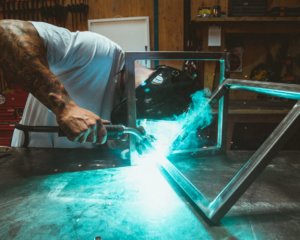Home / Residential
The Dumbwaiter Installation Process
June 23, 2020 Considering the installation of a dumbwaiter (or lift) at your private residence or commercial/industrial property?
Considering the installation of a dumbwaiter (or lift) at your private residence or commercial/industrial property?
The installation process for a dumbwaiter or lift cannot begin until design and manufacturing is complete. Only once that phase is finished, of course, can the installation process start.
While each project a dumbwaiter manufacturer like Matot works on is unique, the installation steps are generally identical from project to project. Discover some of the key parts of the process for dumbwaiter installation below and contact a Matot representative to discuss your project.
Build the Dumbwaiter Shaft
Dumbwaiters operate within a shaft (a vertical – up and down – tunnel). Architects designing new homes can dedicate space to these systems but those rehabbing properties must create the shaft out of existing space (once again, requiring an architect or engineer). Once the shaft is complete (or its specifications determined in conjunction with a dumbwaiter and lift manufacturer like Matot, it’s time to actually start the installation process.
Install the Dumbwaiter Motor/Actuator
Manual dumbwaiters were the only option a century ago when Matot first began building these systems, but much has changed in that time. Today, the majority of dumbwaiters are electric (automatic) and as a result, are much safer than at any time in history (when used correctly of course).
When the shaft build-out is complete, the next step is to install the dumbwaiter motor or actuator – the component responsible for moving and controlling the system. Motors are most often located at the top of the shaft and located within the system frame or rails.
Anchor the Dumbwaiter System
When the motor has been installed, it’s time to anchor the whole system to prevent it from moving out of place (even slight errors in this phase can result in long-term damage to your dumbwaiter system). The frame is what the dumbwaiter actually travels upon, pulled by the force exerted by the motor. Once the frame or assembly has been fastened correctly to the floor or ground, the next step is to connect the system to the grid (the power).
Connect Electricity
The dumbwaiters of yesteryear required manual operation, but today all that’s required is the push of a button to move things from one floor to the next. The next to final step in the dumbwaiter installation process is to connect the electrical components built custom for each project by Matot. Licensed electricians must play a central role in connecting the electricity to dumbwaiter systems (mandated by state and local laws).
Test and Create Maintenance Plan
Once the electricity is connected to the dumbwaiter system, testing can begin. What the Matot installation team looks for is consistent movement, low noise and vibration, and in general, proper operation. Once fully tested, however, consider setting up a regular maintenance plan to ensure that your dumbwaiter or lift system continues.
Request a Quote for a Matot Dumbwaiter
Matot has been designing, engineering, manufacturing, and installing dumbwaiters for well over a century and we can do the same for your project. Request a quote today or contact a Matot representative to learn more.
Back To Blog
Download Masterspecs
Matot’s master specifications are for use for all products.
Browse MasterspecificationsDesign & Planning Services
Our Planning Center has everything from basic information to final drawings.
Get Started With Matot